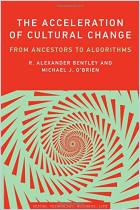Únase a getAbstract para acceder al resumen.

Únase a getAbstract para acceder al resumen.
Clive Finlayson
The Smart Neanderthal
Bird Catching, Cave Art & the Cognitive Revolution
Oxford UP, 2019
¿De qué se trata?
Neanderthals and Homo sapiens aren’t nearly as different as people used to think.
Recommendation
The idea that Neanderthals were cognitively inferior to Homo sapiens and that this difference explains the extinction of the Neanderthals and the triumph of H. sapiens is prevalent among both archeologists and lay people. Some view H. sapiens as “behaviorally modern humans,” distinct from both Neanderthals and other anatomically modern humans – based on characteristics such as the way they made and used tools, the emergence of ornament and art, and the shifting types of social life. Anthropologist Clive Finlayson challenges those assumptions and contends that perhaps people underestimated the cognitive capacities of the Neanderthals.
Summary
About the Author
Clive Finlayson is a professor of anthropology at the University of Toronto. He is the author of The Humans Who Went Extinct: Why Neanderthals Died Out and We Survived.


















Comment on this summary